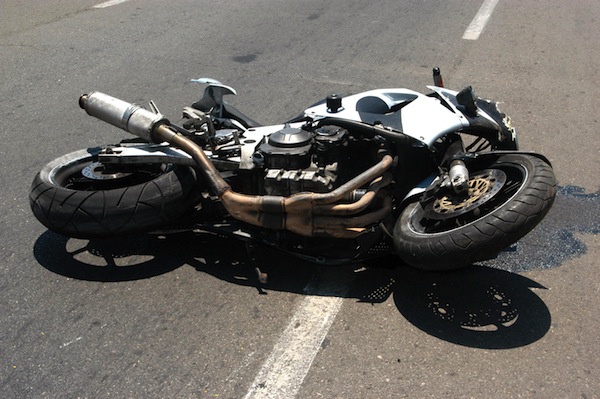
The fun and freedom of taking your motorbike on the open road is what keeps many devoted cycle fans on the road. Make sure your experience is not affected by a terrible accident and take some precautions to keep yourself safe as you share the road with motorists.
According to the Centers for Disease Control and Prevention, over 34,000 motorcyclists were killed between 2001-2008 in the U.S., and approximately 1.2 million were treated in emergency rooms for non-fatal injuries related to motorcycle accidents. The National Highway Traffic Safety Administration reported that in 2006, the rate for fatal crashes involving a motorcycle was 72.34 in every 100,000 motorcycles, versus the rate of fatal car accidents, which was 13.1 in every 100,000 cars.
Start your safe driving practices with appropriate safety gear; it is the only thing between you and the road.
- Helmet – D.O.T. Approved
- Eye protection such as a face shield or safety glasses
- Leather footwear with over the ankle protection and low heels
- Long pants of denim or comparable durability
- Long sleeve shirt or jacket
- Full fingered leather gloves
Before you even get on your bike, be sure you are completely drug and alcohol free for your safety and that of everyone else on the road.
Here are some important safety tips to follow to avoid motorcycle accidents…
Take a quick walk around your bike to evaluate your bike’s condition. Be on top of possible broken parts, maintain controls and proper oil changes on schedule, as well as check the chain, suspension, tires, signals working and proper tire pressure.
Be seen, be heard. Lights on and use your horn if signs of danger are imminent.
Ride smooth. That is to say to keep throttle use consistent and even steering pressure and acceleration. Smooth riding will not only give you better gas mileage and reduce wear and tear on your bike, but it makes it easier for other drivers to see you better and anticipate where you will be.
Always be aware of where you are in relationship to other drivers, including what is happening with oncoming traffic.
Keep a clear line of sight and travel path. If you can’t see as well due to weather, darkness, or curvy roads, slow down to be prepared for what lies ahead.
Allow extra space and time to adjust yourself to other motorists’ movements.
Travel in the part of the lane where you are most visible.
Always use your signals for lane changes, drive as if you are invisible and assume other drivers can’t see you: Ride particularly defensively.
Check left front, right, then left again before proceeding through an intersection. Know what hazards may await you and be prepared to adjust.
Always check your rearview mirror before reducing your speed. Slowing down too quickly when a car is on your tail can put you at serious risk.
Allow for a 2-4 second following distance. If it is night or any weather conditions, increase that to 4-8 seconds to allow for the best cushion for safety.
Pay attention to turns and curves. They pay a significant role in the majority of motorcycle accidents due to rider error.
Know where driver’s blind spots are and take care not to ride in them.
The far left lane is usually the safest lane due to less vehicles merging from that side.
Also pay attention to highway exits that are on the left, as cars will be merging to exit and entering the highway occasionally from the left also.
The Motorcycle Safety Foundation is committed to promoting safe driving and rider education nationwide. MSF can connect you with motorcycle safety classes near you.
Their site has a free library with great resources and tips. Check it out!
If you have been involved in a motorcycle accident and you are not at fault, contact us at Martin Law, PLLC for a free case evaluation.
Charles Martin, Marin Law LLC
Call for a free consultation 206-684-9468
